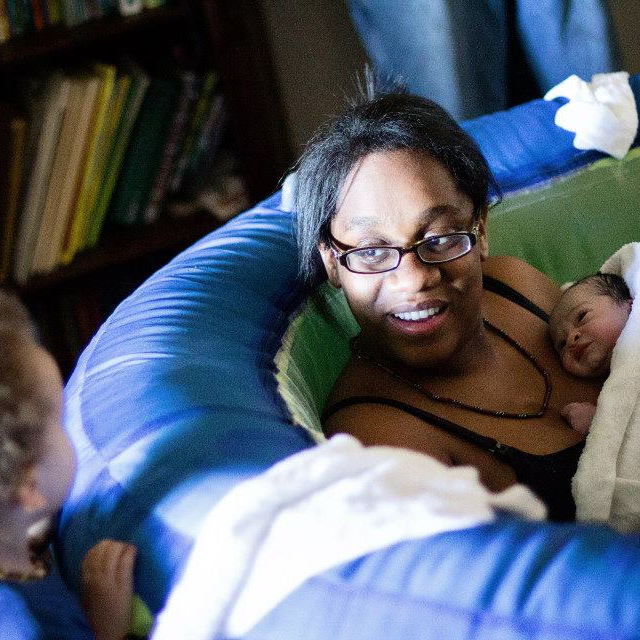 Floating in water is natures epidural, many women prefer to labor and deliver in a birth pool.
Floating in water is natures epidural, many women prefer to labor and deliver in a birth pool.
Water birth is the process of giving birth in a tub of warm water. Proponents believe water birth results in a more relaxed, less painful experience, gentler for the baby and less stressful for the mother. Some mothers choose to labor in the water and get out for the delivery. Others decide to stay in the water for the delivery as well. It is believed that reducing the stress of labor and delivery reduces fetal complications. Water birth should always occur under the supervision of a qualified health care provider.
Can I Experience a Water Birth in my Home?
Yes, one of the core services of Arizona Midwife is to enable home water births, and you can rent a birth tub in Arizona which is specially designed to facilitate home water births.
Treat yourself and your baby to warm, luxurious water to cradle you and give you complete freedom of movement during labor and birth if you choose. This is an excellent way to take charge of your birth experience and help facilitate a gentle birth.
While the majority of water births are at home or in a birthing center, there are some hospitals that offer this service also. Hospitals are seeing the benefits of allowing women to make their own choices, be sure to verify water birth is available if this is in your hospital birth plan.
When Should I Get in the Water?
Good question. The ideal time to get in the water will vary from woman to woman. A woman should be encouraged to use the pool whenever she has the desire. However, here are where the differences in benefits may occur. If a mother chooses to get into the birth pool during early labor, before her contractions are strong and close together, there is a possibility that the water might be so relaxing it could slow down or even stop labor. Some mothers find being in the water during early labor calming, helping them to relax, let go of any fear and then progressing quickly to active labor.
To use the water effectively requires a birth mother do a 'trial of water' for at least an hour to determine how effective and in what direction the water immersion is taking her. Midwives report that some women can go from 1cm to complete dilation within one to two hours of immersion.
What is Water Immersion and Why is it Important?
Water immersion is defined as providing a depth of water which enables the mother to sit in water that covers her belly completely and comes up to her breast level or kneel in water on her haunches which comes up to just below her breast level. Any amount of water less than this does not constitute true immersion and will not create the buoyancy effect and produce the chemical and hormonal changes which enhance a more rapid labor. The chemical and hormonal effects of immersion take effect after no less than twenty minutes and peak around ninety minutes.
What is the Temperature of the Water?
Water should be monitored at a temperature that is comfortable for the mother, usually between 95-100 degrees Fahrenheit, never exceeding 101 degrees Fahrenheit. It is a good idea to keep the mother hydrated, maybe using a cold cloth or cool mist from a spray bottle for the mother's face and or neck might be welcomed.
What Prevents the Baby from Breathing Under Water?
Briefly, there are the four main factors that prevent the baby from inhaling water at the time of birth. All four are scientifically based and can be best understood by reading Waterbirth Basics: From Newborn Breathing to Hospital Protocols by Barbara Harper, RN.
Is Water Birth a Safe Option?
Yes. We suggest reading safety recommendations and guidelines found at http://www.waterbirth.org/research-documents under Protocols and Guidelines section.
Summary of Benefits for Labor and Birth in Water
- Buoyancy facilitates mobility and enables the mother freedom to assume any comfortable position
- Water is soothing, comforting, relaxing
- Provides significant pain relief
- Conserves a mothers energy
- Reduces the need for drugs and other medical interventions
- Offers perineal support, decreasing the risk of tearing and reduces the use of an episiotomy
- Buoyancy promotes more efficient uterine contractions and improved blood circulation resulting in better oxygenation of the uterine muscles, less pain for the mother, and more oxygen for the baby
